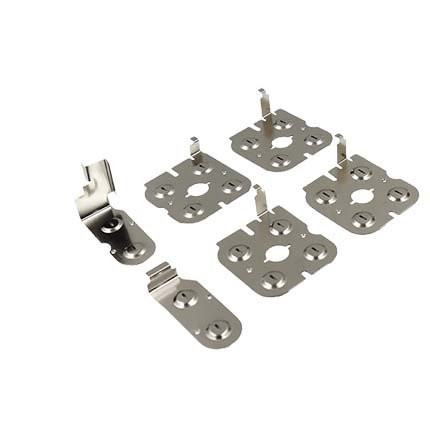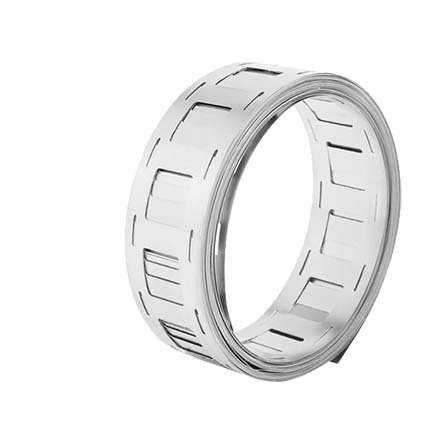When we talk about batteries, especially rechargeable ones, you might not immediately think of something like nickel strips. But did you know that nickel strip plays a crucial role in how batteries work? Whether you're building a battery pack for an electric bike, a solar energy system, or a simple DIY project, understanding the size and thickness of nickel strips can make a huge difference in battery performance and safety.
This guide will help you understand what nickel strip is, why it’s important, and how to choose the right size and thickness of nickel strip for your battery needs.
The size and thickness of the nickel strip are key factors that influence the performance, safety, and overall effectiveness of a battery pack. Here are some things to consider when choosing the right nickel strip for your project:
1. Battery Current Draw
The current (measured in amperes or amps) a battery will deliver directly affects the thickness of the nickel strip you need. If your battery needs to deliver a high current (like in power tools or electric vehicles), you'll need a thicker nickel strip to handle the load without heating up too much.
For example:
- Low Current Draw (like small DIY battery packs): A thinner strip (around 0.1mm to 0.2mm) might be enough.
- High Current Draw (like for electric vehicles or high-performance devices): A thicker strip (around 0.3mm to 0.5mm or more) is necessary.
The thicker the strip, the better it can carry the current without overheating or causing resistance that could lead to efficiency losses or safety issues.
2. Battery Size and Configuration
The size of your battery cells also determines the size of the nickel strip. Larger battery cells (like those used in electric vehicles or large storage systems) need longer and wider strips. The configuration (whether you're making a series or parallel connection) also influences the amount of nickel strip required.
Series Configuration: Connecting cells in series increases the overall voltage of the battery pack. The nickel strip in series connections will often be thinner since the cells are not drawing as much current at once, but the overall connection is crucial.
Parallel Configuration: In a parallel configuration, where the cells share the current load, the nickel strip needs to be thicker to handle the larger current.
3. Nickel Strip Width
The width of the nickel strip also plays an important role in handling the current. A wider strip will provide more surface area for electricity to flow, which is especially helpful for high-power applications. Battery packs with large currents require wider nickel strips to avoid excessive heat buildup and resistance.
Common widths for nickel strips are:
- 6mm – 8mm for light-duty applications
- 10mm – 12mm for medium-duty applications
- 14mm – 20mm or more for heavy-duty or high-power applications
4. Nickel Strip Thickness
The thickness of the nickel strip is perhaps the most important consideration when selecting the right strip for your battery pack. The thickness will determine how much current the strip can handle, how much heat it will generate, and how much it will resist the flow of electricity.
Here’s a breakdown of common nickel strip thicknesses and their typical uses:
0.1mm – 0.15mm: These thinner strips are often used in small batteries or low-drain applications like flashlights, portable fans, and toys. While they are cost-effective and flexible, they can only handle relatively low currents.
0.2mm – 0.25mm: Medium thickness strips are common for DIY battery packs or medium-powered devices such as e-bikes, drones, and laptops. They offer a balance between strength and flexibility.
0.3mm – 0.5mm: These thicker strips are used in high-drain applications like electric vehicles, power tools, or large battery storage systems. They can handle much higher currents, making them ideal for demanding power needs.
5. Material Quality and Surface Coating
It’s not just about nickel thickness and size. The material quality and whether the strip has a surface coating (such as nickel-plated steel) are also important factors in the overall performance and durability of your battery pack.
Pure Nickel: High-quality pure nickel is ideal for most applications because it offers excellent conductivity and heat resistance. It’s especially suitable for high-performance battery packs.
Nickel-Plated Steel: Some strips are made from steel coated with nickel. While this is a more cost-effective option, the conductivity is not as good as pure nickel, so these strips may not be suitable for high-power applications.
Practical Examples of Nickel Strip Sizes and Thicknesses
Let’s look at some real-world examples to help you choose the right nickel strip size for your project:
Example 1: DIY 18650 Battery Pack
If you’re making a DIY battery pack using 18650 lithium-ion cells (a common size for laptops, power banks, and e-bikes), you might need to connect several cells in a series and/or parallel configuration.
Series Configuration (for voltage increase): For a 10-cell configuration (e.g., 5 cells in series), a 0.15mm thick, 8mm wide nickel strip is usually sufficient for handling moderate currents.
Parallel Configuration (for current increase): For high-current draw applications, you may need a 0.2mm thick, 10mm wide nickel strip for better conductivity and heat dissipation.
Example 2: Electric Bike Battery Pack
In an electric bike battery pack, the cells need to handle much higher currents, as the bike uses a large motor. Here’s how you might select the nickel strip:
Thickness: A 0.3mm to 0.5mm thick nickel strip is best for electric bike battery packs because it needs to handle high continuous current without heating up.
Width: A 12mm to 14mm wide strip ensures the strip has enough surface area to conduct the current safely and efficiently.
Example 3: Solar Power Storage Battery
For solar energy storage, you might use large format cells or multiple smaller cells in a configuration that requires both high current and high voltage.
Thickness: 0.3mm to 0.4mm thick nickel strip is often sufficient.
Width: The width would depend on the number of cells and the expected current draw, but 12mm to 16mm wide is common for these kinds of setups.
Conclusion
Choosing the right nickel strip for your battery pack is vital to ensuring your battery performs optimally and safely. By considering factors like the current draw, battery configuration, nickel strip thickness, and width, you can make sure you select the right materials for your project.
Whether you are working on a small DIY project or a high-powered battery pack for an electric vehicle or solar energy storage, understanding these factors will help you make an informed decision.
Remember, the nickel strip might be small, but it plays a huge role in how well your battery functions, so getting it right is key to ensuring both performance and safety!










